Ancient Psychedelia: Alien Gods & Mushroom Goddesses
Online Book - Chapter 19, Page 382
Back to Online Book Mainpage / Next Page (Chapter 19, Page 383)
Ecuador has several cultures which inhabited the area and made their own unique works of mushroom art. The Valdivia culture, from 3500–1800 BC, is probably the oldest in which we have examples of figurines from. Little figures exist which look like Jawas from Star Wars, with little mushroom hoods as heads (89d). More common are the figurines with striations along the faces, and bulbous mushroom heads (89e), and some which look almost Egyptian in their style (89i). There are even some which are two headed representing Gemini twins or Castor and Pollux (89h, j, k). L: (89d) Valdivia Ecuador c. 3500-1800 BC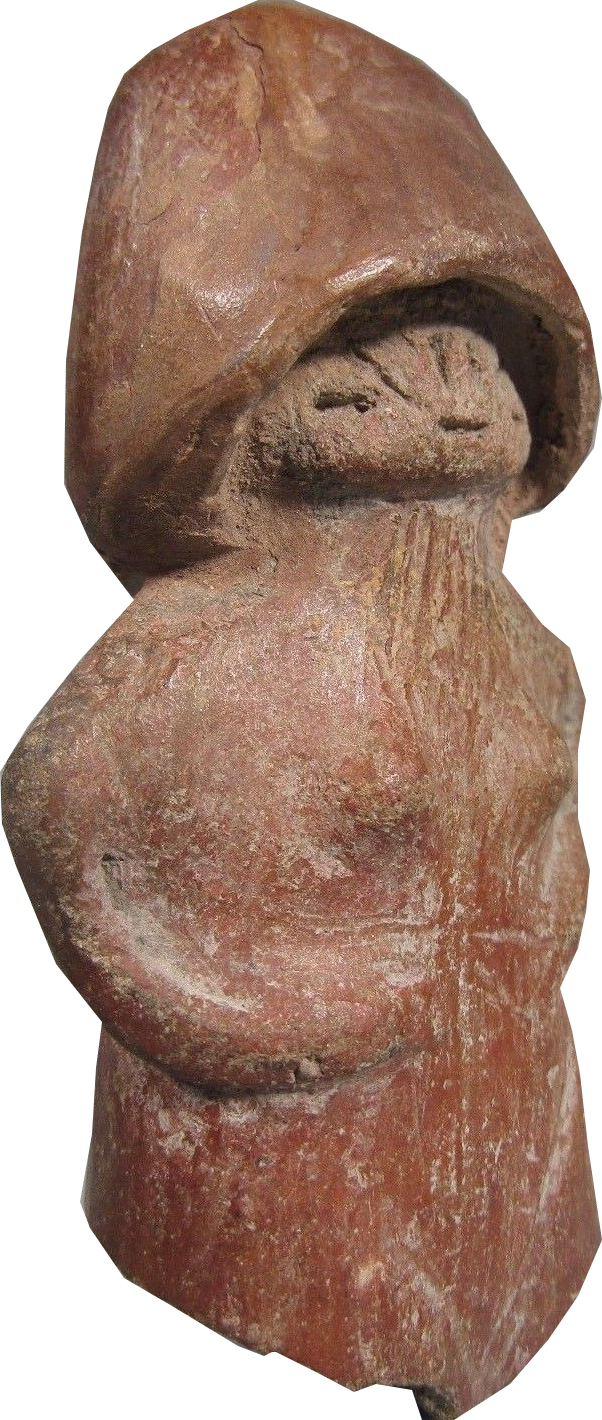 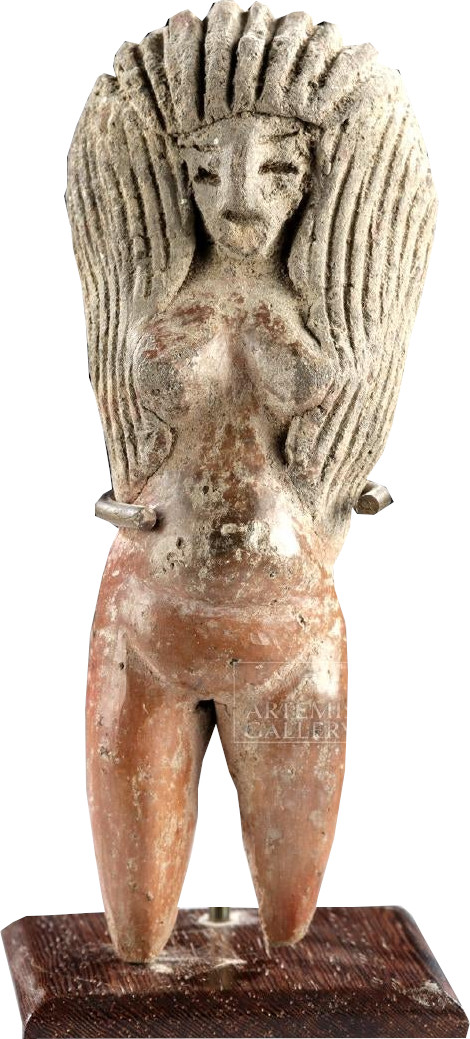 R: (89e) Valdivian Venus Ecuador c. 3500 BC (89h) Valdivia. Ecuador c. 2000 BC 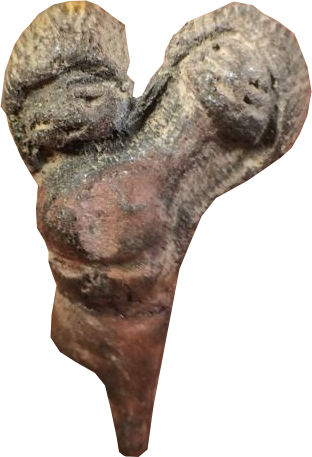  (89i) Valdivia Ecuador c. 2500-1500 BC The Chorerra culture thrived from 1300 BC-300 BC and made figurines which look more like space beings, with gold bulbous heads and red bodies and white dots all over (89a). The Jama coaque culture, which existed in Ecuador from 500 BC-1500 AD, created more intricate designs, with mushrooms atop their heads (89b), and occasionally made figures of gods or goddesses from other cultures, as seen in a figure of Artemis, with traditional cones all over the body, and a bull horn headdress (89c). Head fragments which have been recovered have mushroom style shapes as well (89g) similar to the La Tolita culture, c. 600 BC-200 AD (89f). Other pieces include the typical mushroom headdresses (80j). |
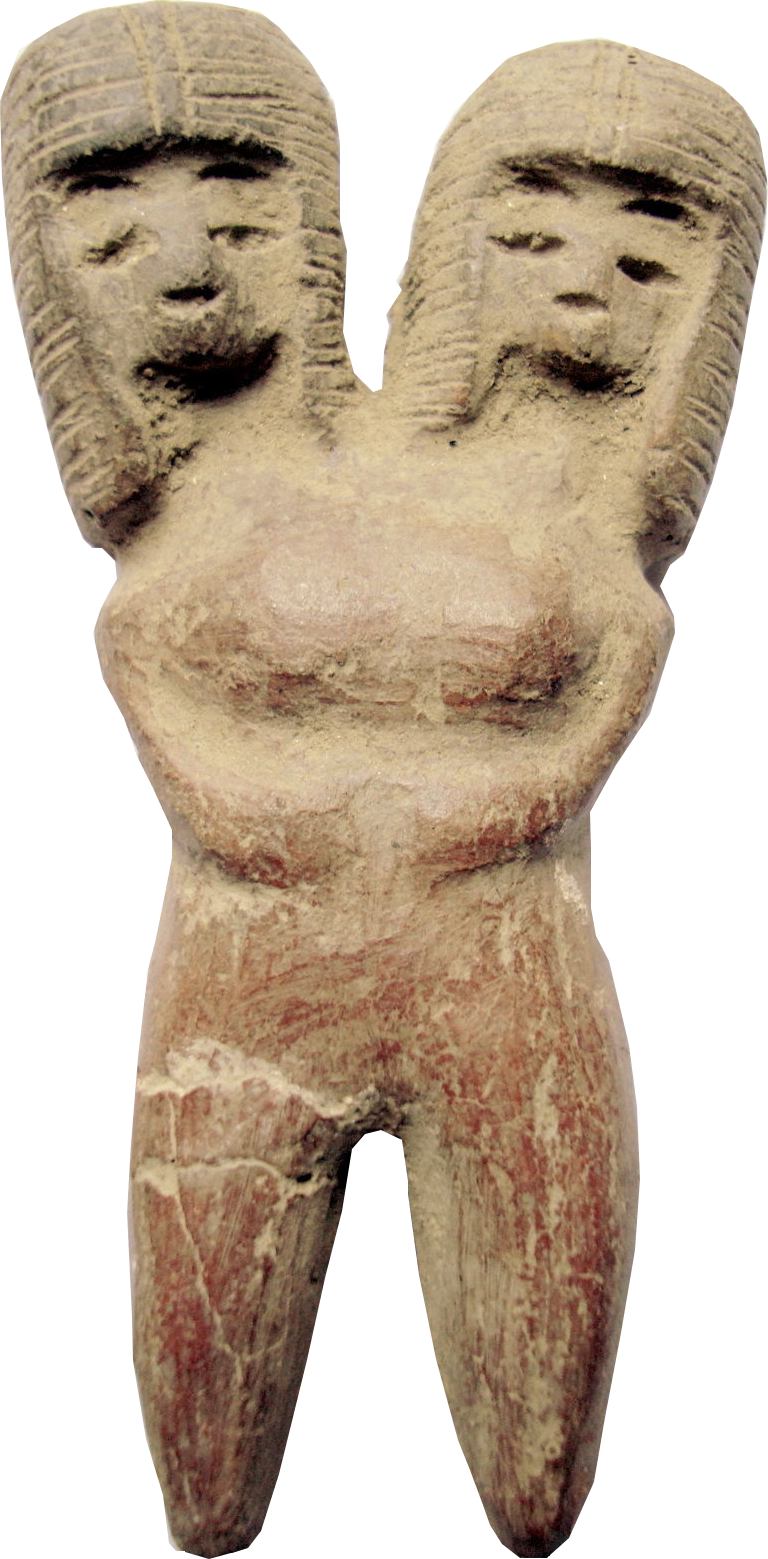 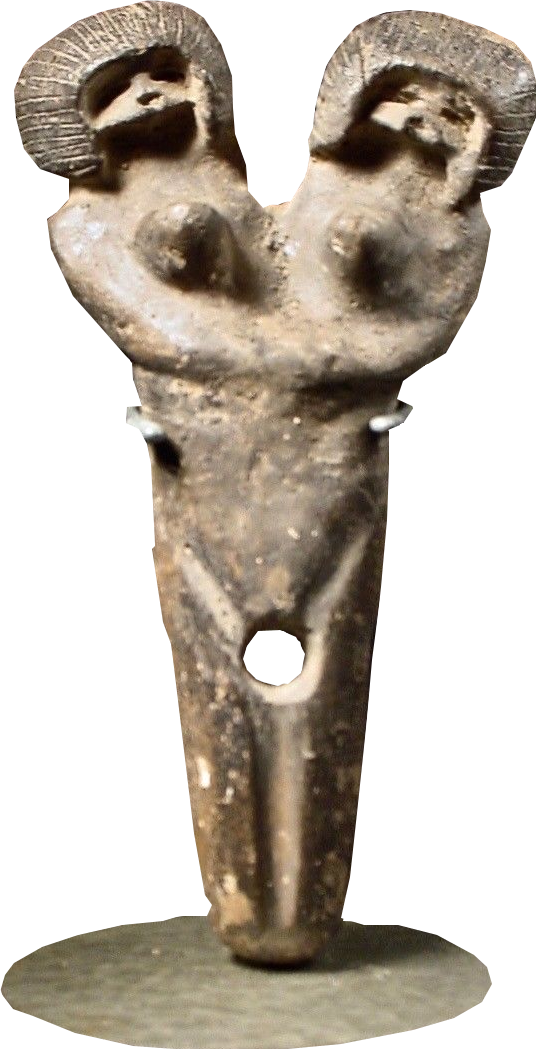 R: (89k) Valdivia, Ecuador c. 2300 BC L: (89a) Chorrera Culture c. 1300 BC-300 BC 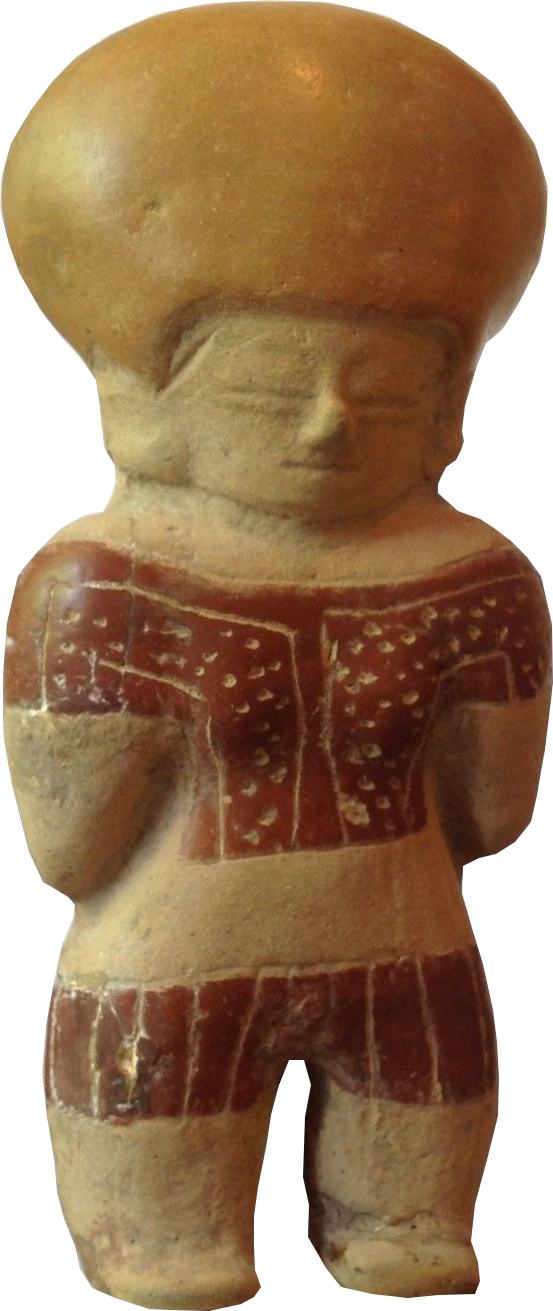 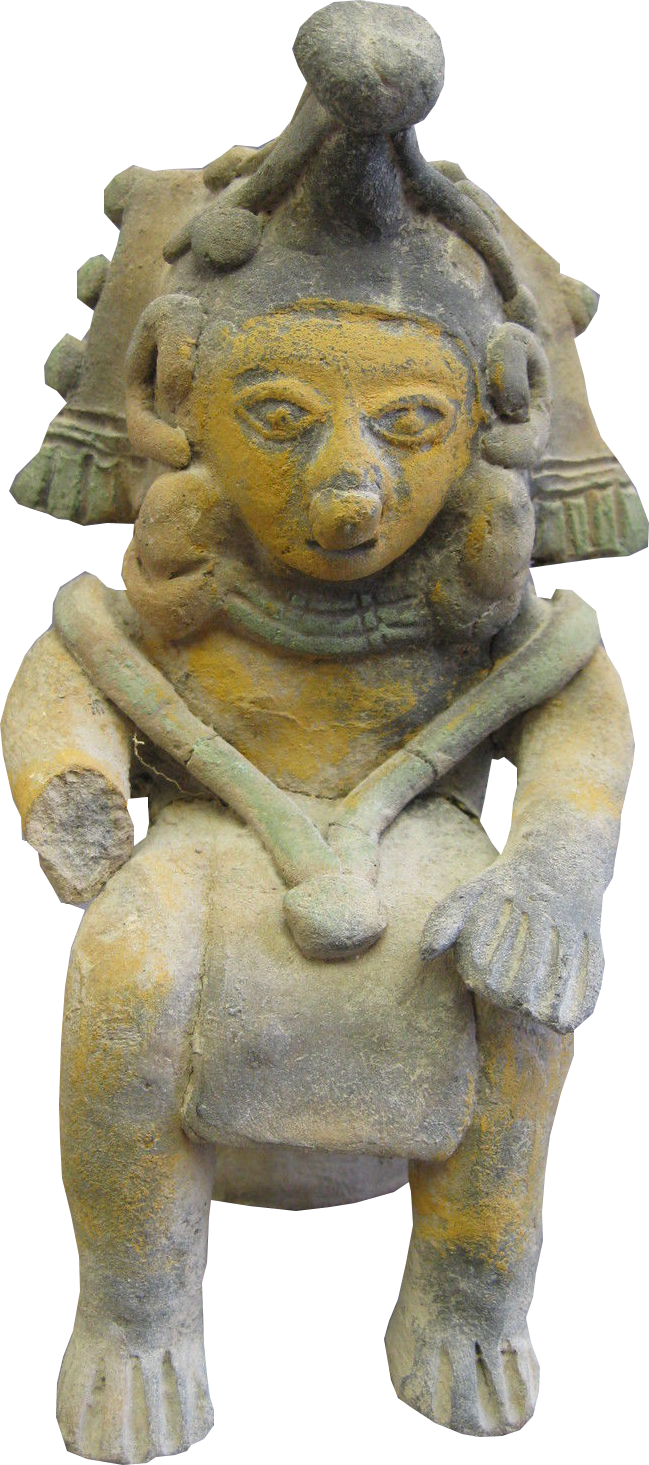 R: (89b) Jama coaque, Ecuador c. 500-1500 AD L: (89f) La tolita Culture, Ecuador c. 600 BC-200 AD 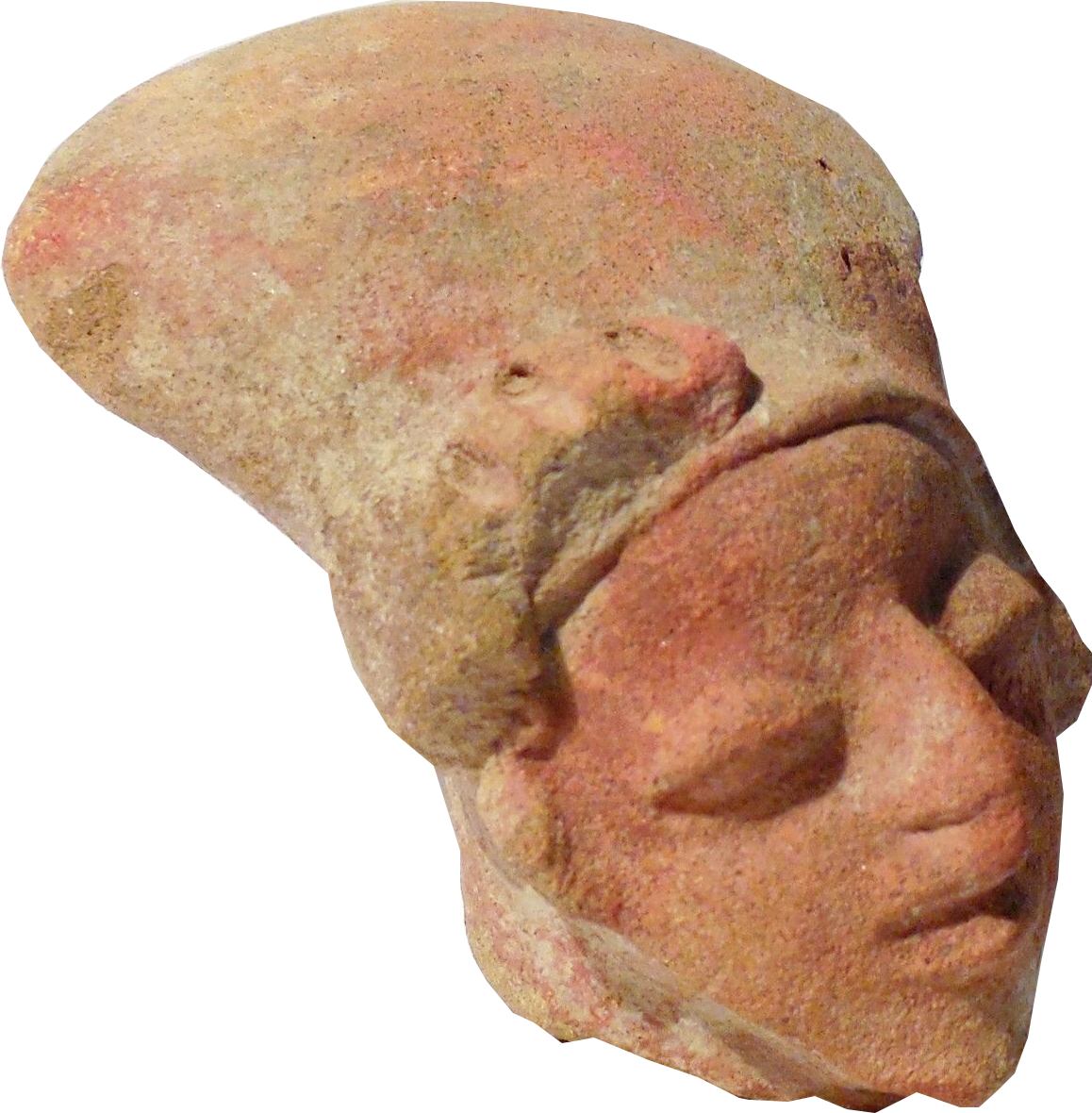 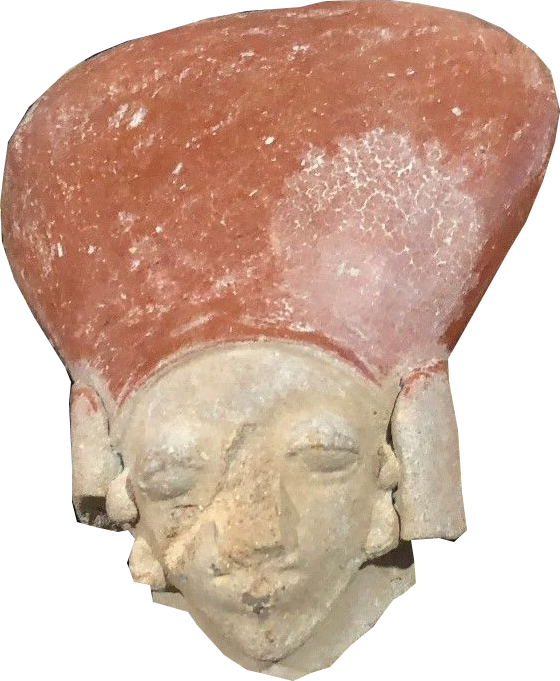 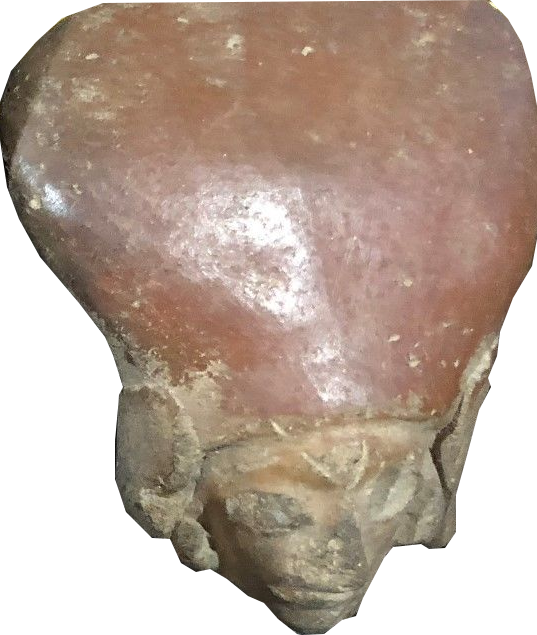 R: (89g) Jama coaque Culture c. 600 AD |
Go Back to Page 381